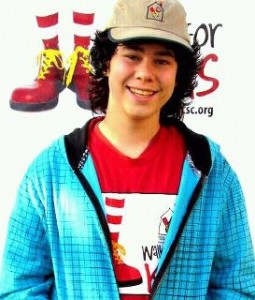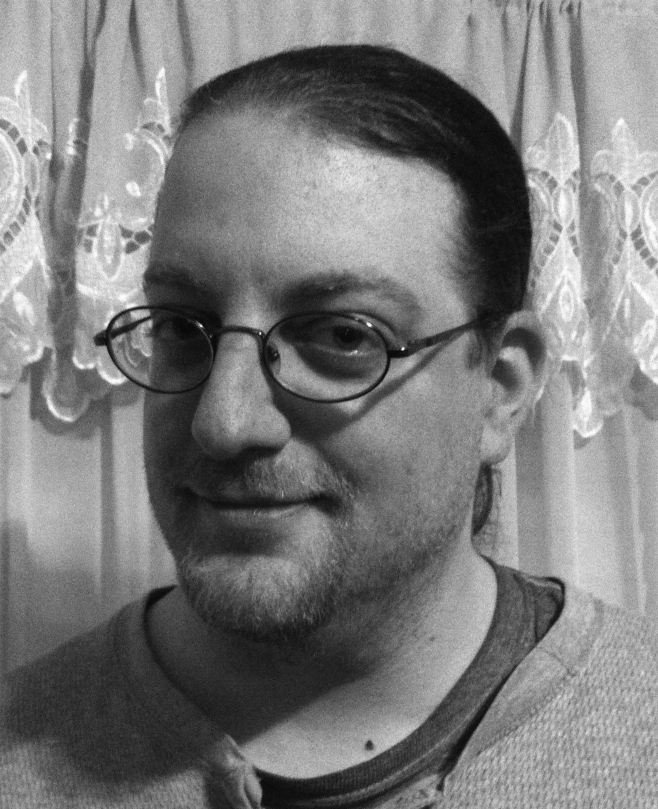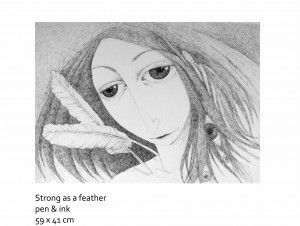All Nora Hawks and her husband wanted was to raise horses on their New Mexico ranch. But Butch Wheeler and his 11 outlaws murdered her husband, raped Nora, set their house on fire and left her for dead. She survived and returned, hiring retired bounty hunter Peter Clawson to teach her how to track and kill.
She had to train, not only in the ways of killing, but to mentally and physically survive in a male world of merciless, sometimes mindless, violence. When the day came that Nora was ready, the deadly 12-member gang was no match against the fury of one woman’s vengeance.
ANTHONY: Hi, Dennis. Glad we finally have a chance to talk. I’ve compared One Woman’s Vengeance to Charles Portis’ True Grit. What inspired you to write a somewhat classic Western?
DENNIS: At first I thought I wanted to write a western. As I got into it I realized that what I really wanted was an uncluttered setting, an uncivilized land and landscape where I could concentrate on character, almost like a Greek play. I wanted to create a woman who loses everything, including her dreams, and set her on a path of revenge. I wanted to study her relationship with a rather passive but intuitive and deadly retired bounty hunter. . . create bad guys that are so despicable you cheer as they are confronted by this intelligent, determined woman whose rage defines her destiny.
ANTHONY: How long did you work on the book before it was published?
DENNIS: I played with it for four years and then worked on it seriously for three years. In all, I rewrote it probably 10 times. The opening graphs were revised probably 20 times. Unlike a lot of writers, I love writing, and rewriting. I love the challenge of finding a way of saying something in the most compact, dynamic way possible. I don’t like wasted words. We don’t have time for them anymore.
One of the best compliments I’ve had is from a female executive who travels and reads a lot. She said that she often skips through passages of books to get to the meat. With Vengeance, she said, she found herself reading every word because there wasn’t any fat or filling.
ANTHONY: Nora Hawks is a fascinating central character. How did she develop from your initial concept to the woman we see in the published work?
DENNIS: I have to be honest, Nora appeared pretty much fully formed. She was rounded out as her relationship with Peter developed. A lot of people ask if she was modeled on a particular person. My answer is she’s a composite of nearly every woman I’ve ever known. Women are much stronger than men. They combine strength with compassion and practicality. Most men don’t give women a fraction of the credit they deserve.
I have to tell you that feedback from males and females of all ages has been overwhelmingly positive. But women are absolutely passionate about Nora. One woman emailed me saying, “I want to be Nora – strong and beautiful.” She’s 82-years-old. Another wrote and said, simply, “I could so be her.” Nora’s a real person people can relate to. She’s also a mythic figure who, when her family and dreams are taken from her, unleashes a fury that’s unstoppable. She’s really hit a nerve with readers.
I say all this very humbly. I opened the door and she rode in, fully formed and ready to overcome all odds to exact vengeance on her own terms.
I’ll also add that cover artist Marc Rubin fully captured her in terms of her beauty and her fury. His cover is, to me, a masterpiece and a reminder to all writers to find a good cover artist. You can’t judge a book by its cover but your first impression of the book is from that very important work of art.
ANTHONY: The Western movies of the 40s and 50s were full of strong-willed women who ultimately let the men in their lives be “the defender” and do all the dirty work. Nora is the polar opposite of that — while she could just hire Peter Clawson to enact her revenge for her, she continually pushes him out of the way despite the emotional toll her actions are taking on her. Was there ever a point where you thought about easing her path a little bit?
DENNIS: Great question! No, it was quite the opposite. I kept pushing, making things harder, just to see how strong she was. I understood her strength fully when she was alone in the brothel room preparing to confront one of her attackers. She’s scared, sweating and shaking. Previously she had rejected God. Now, instead of falling to her knees and asking for forgiveness and support, she says, “Okay, God, let’s give each other a second chance.” In other words, “We both messed up. Let’s team up and tackle this together.” That line was a gift. I don’t know where it came from but it sums up the woman’s incredible strength.
No, Nora, through what was done to her and her decision to exact vengeance on her own terms, was born to suffer and fight in a man’s world.
ANTHONY: Speaking of Peter Clawson — I see from your blog that I’m not the only one equating him with Rooster Cogburn. Was there any concern as you were writing that Peter would fall into a stereotypical “western bounty hunter” role? Especially since this really is Nora’s story and Peter is important but still somewhat a secondary character?
DENNIS: When I started the book seven years ago True Grit wasn’t even on the radar. The timing is pretty serendipitous. But I’m not too concerned. Peter is much different character than Rooster and Nora is seeking more than justice. She’s a woman who’s lost everything and is out for total revenge while trying to keep her soul. Peter is outwardly quiet until provoked, and then he is deadly.
One of the fun ironies of their relationship is the feminine/masculine tradeoff. He wants to learn how to cook. (“I ain’t had a good bowel movement since the Civil War.”) So Nora teaches him how to live, while he teaches her how to kill.
ANTHONY: I know you love the western United States. Why New Mexico as a setting for the book?
DENNIS: I just love that state. I’ve stood on old volcanoes looking out over plains where dinosaurs played and fought, traveled over dirt roads on huge mountains, took pictures of lizards in the White Sands Desert, toured ghost town copper mining operations. In one part you can follow Billy the Kid. Drive down the road and you’re in Roswell! New Mexico is huge and varied and parts of it are just plain mystical.
ANTHONY: How much research into the time-period did you do both before starting the book and throughout writing it?
DENNIS: We’ve traveled a lot out west – Colorado, Wyoming, New Mexico, California, so I had, I think a feeling or an appreciation of the West. However, if you go back and look, there’s not really a lot of description of the landscape, clothing, buildings. Just enough to sketch them in. I really wanted to focus on characters.
ANTHONY: One Woman’s Vengeance is a nice complete story with a very satisfactory (but not necessarily “Hollywood-happy”) ending. But you’ve mentioned a sequel in the works. Where do you imagine taking Nora and Peter’s journey next?
DENNIS: I’m struggling with that, Anthony!
I wasn’t planning a sequel but when people read the post-script they assumed there would be a new book. Vengeance is so intense and so focused on Nora’s inner and outer struggles that I’m exploring various options for the sequel. I thought of killing off Peter but realized how important he is as a partner, teacher, father figure and symbol of the West’s wildness.
The postscript is a natural lead-in to another novel, however. The 1870s was the period when the myth of the West was created. The Dime Novels and newspaper accounts provided the blueprint for the 20th century of our need – and our ability — to create larger-than-life heroes to worship, and, ultimately, destroy.
I don’t know. I want to do right by Nora, who has her own life now. By doing what she did, she is a marked woman, by men who want to kill her to make a name for themselves and by the media who want to create a legend to sell newspapers and magazines. By her actions, Nora has become a hero and a villain, a person to be worshiped and destroyed.
The working title is, by the way, One Bullet Beyond Justice.
ANTHONY: I can’t close out this interview without at least mentioning your other book, The Perfect Song, which is not a Western and has a very different feel to it. Tell us a little about what The Perfect Song is about and where people can find it.
DENNIS: The Perfect Song took 25 years to write, off and on. It’s about Mendel, a wandering artist trying to write the perfect song. His castaways are picked up by Poul who goes into partnership with Beasely, a publisher who records the songs. Mendel becomes the most famous songwriter in the world and never knows it. It’s a commentary on our society, the heroes we create and then destroy. It’s also about Poul’s struggles with his own identity, ethics and his love-hate relationship with the genius he never meets but who becomes his best friend/alter ego. It’s about art and commerce, how they clash and work together. I started the book in the 20th century and finished it in the 21st century.
It’s still available in print at Amazon. When things slow down I’ll be making it available as an ebook. Thanks for remembering it!
ANTHONY: How could I forget it! And my usual closing question: What is your favorite book, and what would you say to someone who has never read it to convince them that they should?
DENNIS: Honestly, I don’t have one favorite book. Twain and Hemingway have been huge influences. Henry Miller was a genius and a true anarchist. John D. MacDonald was one of the best storytellers ever. Anais Nin consumed me for years (a strong woman who maintained her femininity). I have the complete Sherlock Holmes on my Nook. The Shootist by Glendon Swarthout was also very influential. The hard-boiled writers – mainly Dashiell Hammett, Cornell Woolrich, Raymond Chandler and Jim Thompson – have been influential in my writing—especially Vengeance.
ANTHONY: No wonder we’ve gotten along so well all these years – such similar tastes in writers. I discovered Woolrich not long ago, and am somewhat obsessed. Anything else you’d like to say before we wrap up?
DENNIS: Great questions, Anthony. I spent a lot of hours and miles thinking about them. I hope my answers did them justice. I also want to thank you for all that you do for artists. Most people don’t realize how time-consuming it is to do the reading, listening, research, interviews, editing and publishing. Artists are lucky to have people like you. Thanks.
ANTHONY: No, thank you!
Dennis maintains a blog to support One Woman’s Vengeance, with deleted scenes and ruminations on the writing of the book.
You can find him on Facebook, where you can also order personally inscribed print editions of One Woman’s Vengeance. Print and ebook editions of One Woman’s Vengeance are available on Lulu.com, and ebooks are available through Barnes & Noble, iBooks, and Amazon.




















